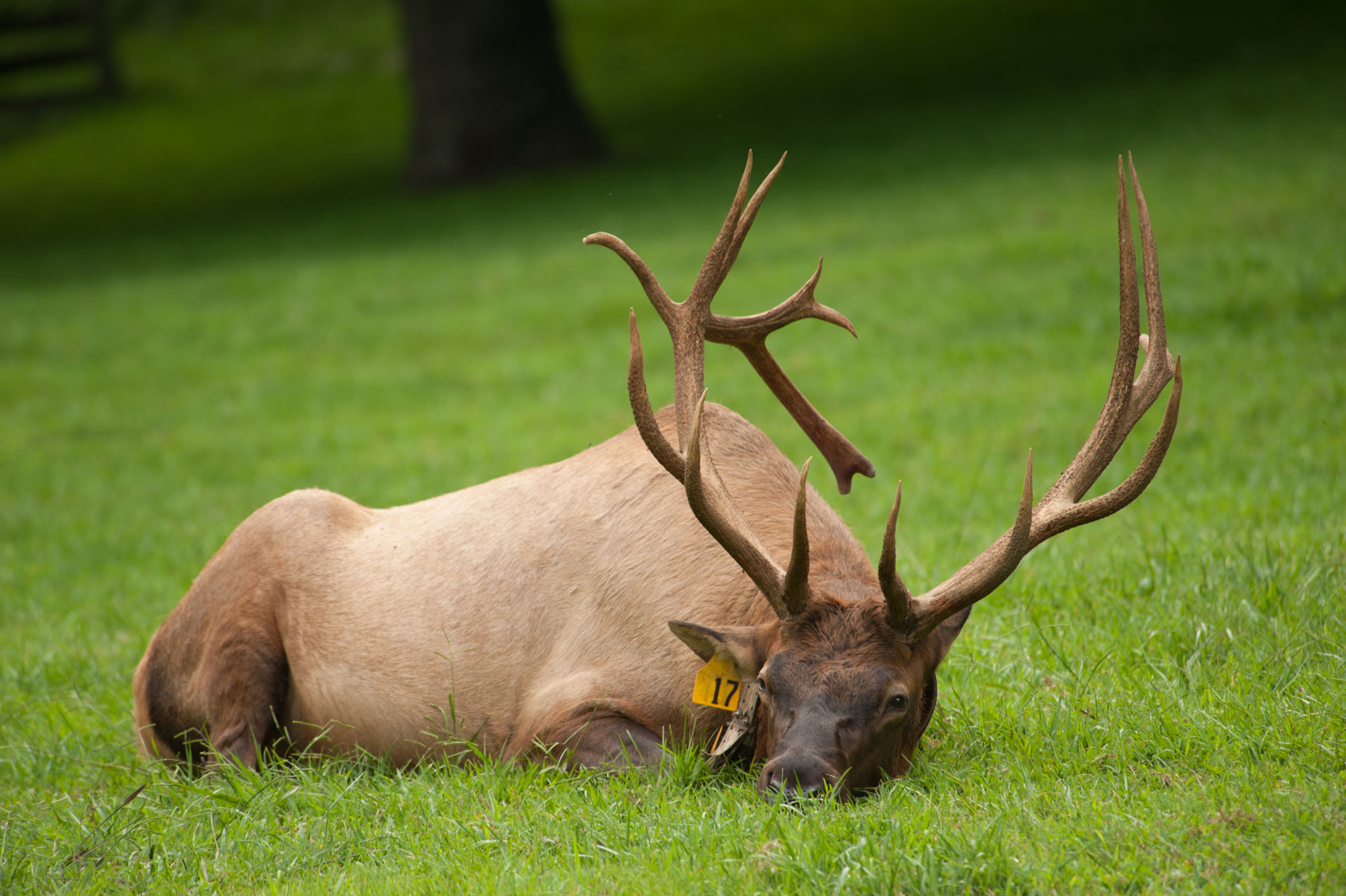
While humans are focused on world events and weather updates, elk have only one thing on their minds. From now to early November, hormones kick in and these large ungulates go into overdrive. During the fall breeding season, bulls’ antlers reach maturity, and their ethereal bugling calls resonate through fields and forests within the park and beyond its boundary.

The bull elk’s call inspires awe not only for its otherworldly splendor, but because it is still a relatively “new” sound in these environs. Though once as many as ten million elk ranged from coast to coast in North America, the European settlers who arrived in the 1700s brought what author David Brill calls a “combination of landscape fragmentation and unsustainable hunting customs” and, as a result, elk were extirpated from this landscape for a century and a half.
“David Brill’s article, ‘A Graceful Giant Makes a Successful Return’ in the fall 2021 issue of Smokies Life journal is one of the more thorough and accurate articles I’ve come across for the elk program and serves as a good record of the associated major events,” says Joe Yarkovich, an NPS wildlife biologist whose work continues to help elk make a successful comeback in the Smokies.
Slowly dispersing out of park lands, the elk herd now totals roughly 200 animals with only about half living in the park, and not even Yarkovich knows their exact number. Elk are crepuscular, which means they are most active at dawn and dusk. During the heat of the day, they may all but disappear into the cool cover of vegetation in Cataloochee Valley, near the Oconaluftee Visitor Center, and on Balsam Mountain.
Brill’s 14-page cover-story in Smokies Life traces the complex research and environmental assessment done prior to elk being brought to the Smokies from Land Between the Lakes in Western Kentucky and Canada’s Elk Island National Park, and provides a broad overview of the ongoing wildlife science that is giving this still-fragile herd a chance to survive long into the future.

Monitoring the park’s elk population began immediately after their release in 2001 and is ongoing to assess the herd’s health and to document any significant impacts to the park’s ecosystems. Brill covers this detailed monitoring science as well as early and current threats to the elk, which now include vehicle collisions as the animals naturally expand into park gateway communities and adjacent lands, often crossing highways to find new territory.
Yarkovich and a team of scientists use radio-transmitting collars to monitor and protect the elk. As Brill explains in his story, “the collars — which feature very-high-frequency (VHF) transmitters powered by batteries that can last eight years or longer — are not used to precisely track the movement of the animals but rather to monitor elk survival and reproduction. An elk whose signal remains stationary for a prolonged period could indicate that the animal has died from black bear predation, a collision with an automobile — both take a considerable toll on the park’s elk population — or of natural causes.”
Pregnant elk often leave the herd and seek sheltered locations in the forest to give birth alone. Collared females’ transmitters allow park staff to locate the newly emerged calves and outfit them with radio collars. Most calves are born between May and June, having been conceived in September or October, which brings us back to the fall rut.
“This is a very stressful time for all of the elk, and their behavior changes dramatically at this time of year,”says Yarkovich. “Mature males (bulls) can exceed 1,000 pounds, and they have very high testosterone levels right now as they compete for dominance. They may charge or challenge anything they see as a threat, including humans and even vehicles. Females are still protective of their calves and are further stressed by the males’ activity.”
Yarkovich says the most important thing you can do is keep your distance. “Willfully approaching elk within 50 yards, or any distance that changes their behavior, is against park regulations and puts you and the elk at risk,” he says.

Below are more NPS tips for safely observing elk in Great Smoky Mountains National Park:
For more information on viewing elk and to watch a short safety video, visit nps.gov/grsm/learn/nature/elk.htm. Purchase the fall 2021 issue of Smokies Life with the elk cover story here.
Subscribe to get the latest posts sent to your email.
The Great Smokies Welcome Center is located on U.S. 321 in Townsend, TN, 2 miles from the west entrance to Great Smoky Mountains National Park. Visitors can get information about things to see and do in and around the national park and shop from a wide selection of books, gifts, and other Smokies merchandise. Daily, weekly, and annual parking tags for the national park are also available.